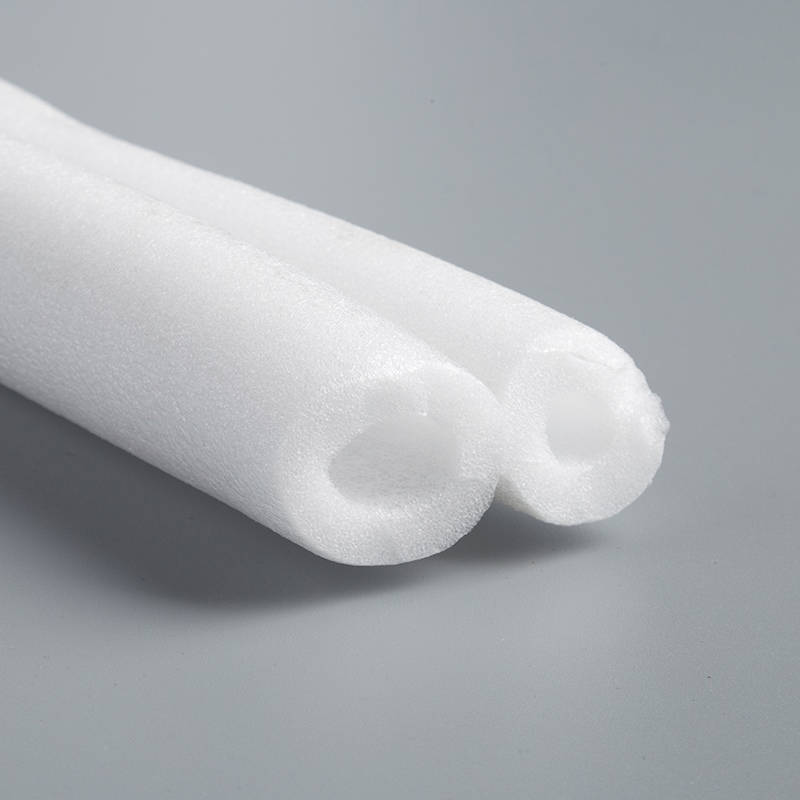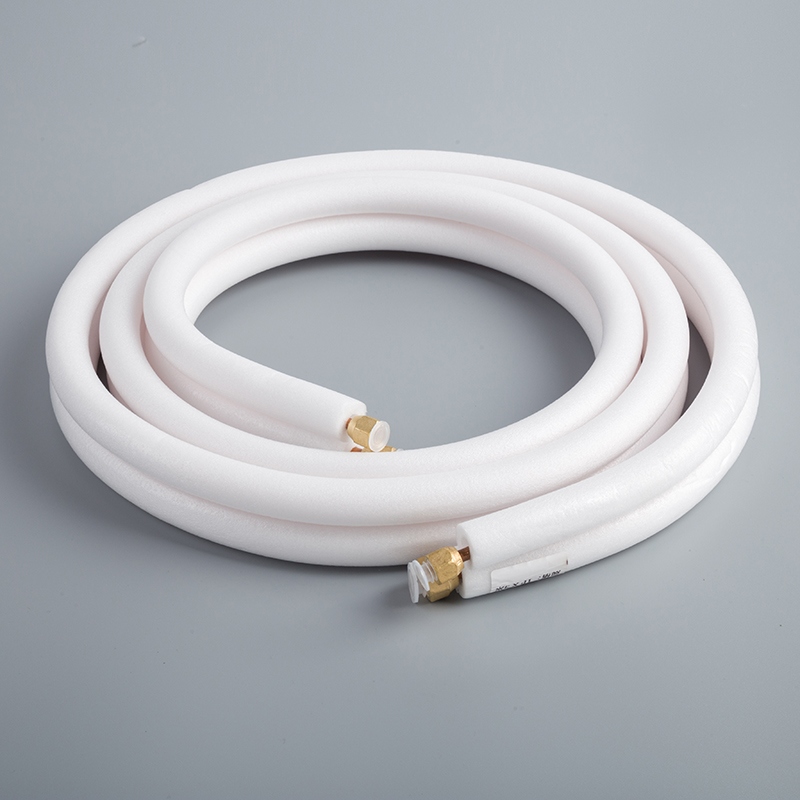What Are the Key Differences Between Copper and Aluminum Pipes in HVAC Systems

When picking pipes for HVAC systems, understanding the differences between air conditioner copper pipe vs aluminum pipe is essential. Copper pipes are strong and resist rust, water damage, and harmful gases. They cool quickly because they hold less heat, saving energy. On the other hand, aluminum pipes are cheaper and lighter but not as strong. Your choice between air conditioner copper pipe vs aluminum pipe affects how well the system works, its cost, and upkeep. Choosing the right pipes keeps your HVAC system working well and fits your budget and design needs.
Key Takeaways
Copper pipes are tough and don’t rust, lasting a long time.
Aluminum pipes are light and cheaper but need more care.
Think about the weather; copper works better in tough climates.
Copper pipes move heat well, saving energy in cooling systems.
Look at both upfront costs and upkeep when picking pipes.
Properties and Benefits of Copper Pipes

Advantages of Copper Pipes
Copper pipes have many benefits for HVAC systems. They transfer heat well, keeping temperatures steady. This is important for air conditioners to cool efficiently. Copper resists rust from water and chemicals, preventing leaks and lasting longer.
Copper pipes can handle high pressure and heat. They are built to manage refrigerants and heat exchange. They also meet safety standards like ASTM B280, ensuring quality in HVAC use.
Examples show these benefits. For example, the Chigo split system uses MicroGroove Technology. It reached 2,500 W cooling with a COP of 3.2. Smaller copper pipes also weigh 30% less, showing they are strong and efficient.
Disadvantages of Copper Pipes
Copper pipes have some downsides too. They can fail if water gets hotter than 180°F. This can cause them to break early in some cases. Water inside can freeze in cold weather, blocking flow. This is a problem in colder areas. Copper may also give water a slight metallic taste, which some people dislike.
Another issue is formicary corrosion. This happens when organic acids, water, and air damage the pipes. It can cause tiny leaks, leading to early failure in HVAC systems.
Common Uses of Copper Pipes in HVAC Systems
Copper pipes are used in many HVAC jobs because they are strong and work well with heat. In air conditioning and refrigeration, they move refrigerants and keep cooling systems working. They are also used in hospitals to safely carry medical gases.
Copper’s rust resistance makes it great for fire sprinklers, ensuring they work in emergencies. They are also common in general HVAC systems for heating and cooling because they are easy to shape and resist corrosion.
Application Type | Description |
|---|---|
Air Conditioning and Refrigeration | Copper pipes are strong and transfer heat very well. |
Medical Gas Delivery | Used to safely carry medical gases in hospitals. |
Fire Sprinkler Systems | Provides strong and reliable pipes for fire safety. |
General HVAC Systems | Copper resists rust and is easy to shape for heating and cooling. |
Properties and Benefits of Aluminum Pipes
Advantages of Aluminum Pipes
Aluminum pipes have many good points for HVAC systems. They are light, making them easy to move and set up. This saves time and money, especially in big projects. Aluminum is also bendable, so it fits different HVAC designs.
Another great thing is how well aluminum moves heat. It keeps HVAC systems at steady temperatures. Aluminum pipes also resist rust, lasting longer in wet or chemical-filled places. These features make aluminum pipes a smart choice for keeping temperatures steady.
Aluminum pipes are known for:
Being easy to bend and strong enough for use.
Moving heat well and resisting rust.
Being lightweight, which makes setup easier.
Disadvantages of Aluminum Pipes
Aluminum pipes have some downsides too. They are soft, so they can dent or get damaged easily. This can make them less durable and affect how well they work.
They are not as strong as copper pipes. Aluminum may not handle high pressure as well, limiting its use in some HVAC jobs. Even though they resist rust, they can wear out faster in tough conditions, like salty air.
Common Uses of Aluminum Pipes in HVAC Systems
Aluminum pipes are popular in HVAC systems because they work well and are flexible. They are often used in air ducts because they are light and don’t rust. People also use them to update old HVAC systems since they are cheap and simple to install.
Common uses include:
Moving air in buildings, especially in city projects.
Fixing and upgrading old HVAC systems.
Helping with HVAC setups in the aluminum extrusion market.
More people are using aluminum pipes as cities grow and modern buildings need better HVAC systems.
Air Conditioner Copper Pipe vs Aluminum Pipe: A Simple Comparison
Cost and Affordability
When choosing between copper and aluminum pipes, cost matters. Copper pipes cost more at first. They are much pricier than aluminum pipes. If you have a small budget, aluminum is cheaper. But copper lasts longer, saving money on repairs later. Over time, this can balance out the higher starting cost.
Aluminum pipes need more care because they are softer. They can get damaged easily, raising repair costs. Installing aluminum pipes also takes more effort, adding to labor costs. Copper pipes are simpler to install and need fewer precautions.
Copper prices change often due to global demand. Aluminum prices stay steadier, making them better for big projects. Here’s a quick comparison:
Metric | Copper | Aluminum |
|---|---|---|
Initial Material Costs | Higher, much more expensive | Lower, good for small budgets |
Long-term Maintenance Expenses | Lower, lasts longer | Higher, needs more repairs |
Installation Requirements | Easier, less work needed | Harder, needs extra care |
Market Stability | Prices change often | Prices stay steady |
Durability and Longevity
Copper pipes are very strong and last a long time. They resist rust and handle high pressure well. This makes them great for HVAC systems that need to work reliably. Copper pipes can handle extreme temperatures and last for decades with few problems. That’s why they are often used for long-term projects.
Aluminum pipes don’t rust but are not as strong. They are softer and can dent or break more easily. In systems with high pressure, aluminum doesn’t work as well as copper. If you want pipes that last a long time, copper is the better choice.
Thermal Conductivity and Cooling Efficiency
How well pipes transfer heat affects energy use. Copper pipes are great at moving heat, keeping cooling steady. Their high heat transfer helps refrigerants work efficiently. This lowers energy use and improves system performance.
Aluminum pipes also transfer heat well but not as well as copper. Studies show aluminum heat sinks with heat pipes can work like copper ones. Aluminum is lighter and cheaper, making it useful in some cases. But if you want the best cooling, copper is still the top choice.
Key points about heat transfer:
Aluminum heat sinks can work like copper ones.
Aluminum is lighter and costs less.
Copper pipes save energy with better heat transfer.
Installation and Maintenance
When setting up HVAC pipes, think about the material's features. Copper pipes are strong and bend easily without breaking. This makes them great for tight spaces or tricky designs. You can solder copper pipes, creating tight, leak-free connections. But, they need regular checks for leaks or rust, especially in humid or chemical-heavy areas.
Aluminum pipes are light, making them easy to move and install. They are flexible, so they fit different HVAC setups. However, aluminum is softer than copper and can dent easily. Extra care is needed during installation to avoid damage. Maintenance includes checking for wear and keeping connections secure over time.
Here’s a simple comparison of maintenance needs for pipe types:
Pipe Type | Function | Maintenance Needs |
|---|---|---|
Copper | Moves refrigerants efficiently | Check for leaks regularly |
Steel | Transfers heat in heating systems | Insulate to stop energy loss |
Various | Controls air quality and humidity | Pick materials based on conditions |
Both copper and aluminum pipes need proper setup and care. Skipping these steps can cause problems or expensive repairs.
Environmental Impact
The environmental effects of HVAC pipes depend on how they’re made and recycled. Copper pipes are easy to recycle, which lowers their impact. Recycling copper uses less energy than mining new copper, making it eco-friendly. But mining copper uses a lot of energy and can harm habitats.
Aluminum pipes also have a small environmental impact because they’re recyclable. Recycling aluminum takes much less energy than making new aluminum. Aluminum’s light weight also cuts down on transport emissions. However, like copper, mining and processing aluminum can hurt the environment.
When picking between copper and aluminum, think about long-term benefits. Both materials are recyclable, but their production affects the environment differently. Using recycled materials can make your HVAC system more eco-friendly.
Choosing Between Copper and Aluminum Pipes for HVAC Systems
Budget Considerations
Your budget is important when picking between copper and aluminum pipes. Copper pipes cost more at first because they are strong and work well. But they save money later since they need fewer repairs. Aluminum pipes are cheaper to buy, so they’re good if money is tight.
Remember, the starting cost isn’t the only thing to think about. Copper lasts longer and doesn’t rust easily, so you won’t replace it often. Aluminum is softer and might need more fixes, which adds to costs over time. Think about both now and future expenses to make the best choice.
Tip: For big projects, check how stable prices are. Copper prices change a lot, but aluminum prices stay steady.
HVAC System Design and Requirements
Your HVAC system’s design decides which pipe material works best. Copper pipes are great for systems needing good refrigerant flow and heat transfer. They move heat well, making them perfect for air conditioners that need steady cooling. Aluminum pipes aren’t as good at this but have improved and can work for many systems.
Here are some things to think about when choosing pipes:
Corrosion Resistance: Copper doesn’t rust, so it lasts longer.
Heat Transfer: Copper moves heat better, helping with cooling.
Flexibility: Copper bends easily, fitting tricky layouts.
Lightweight Design: Aluminum is lighter, so it’s easier to carry and install.
Cost-Effectiveness: Aluminum is cheaper but still works well for basic needs.
Also, make sure the pipes match your system’s refrigerant. This stops chemical damage and keeps the system working well. For high-pressure systems or complex designs, copper is usually better. Aluminum is a good choice for simpler systems or if you need to save money.
Environmental and Climate Factors
The weather and environment affect how well copper and aluminum pipes work. Extreme heat, cold, or wet conditions can change how long pipes last. Copper handles all kinds of weather because it doesn’t rust and can take high pressure. Aluminum doesn’t rust either but might wear out faster in tough places like near the ocean.
Here’s a table showing how climate affects pipes:
Climate Factor | How It Affects Pipes |
|---|---|
Temperature | Old pipes fail more in extreme heat or cold. |
Precipitation | Rain lowers failure rates, except for new cast iron pipes. |
Pipe Age | Older pipes break more in extreme weather. |
Material Type | Different materials react differently to weather changes. |
If you live where the weather is harsh, copper pipes are a safer choice. They handle temperature changes and resist rust, making them last longer. Aluminum pipes are lighter and cheaper but might need extra care to last in tough climates.
Note: Always think about your local weather before picking pipe materials. This helps your HVAC system work better and last longer.
Long-Term Maintenance and Repairs
When picking between copper and aluminum pipes for HVAC systems, think about how much care each needs. Keeping up with maintenance helps your system work well and avoids expensive problems.
Maintenance Needs for Copper Pipes
Copper pipes are strong and need less care, but they still require some attention. Check them often for leaks or rust, especially in wet or chemical-filled areas.
Important tasks for copper pipes include:
Looking for tiny leaks from formicary corrosion.
Cleaning to stop clogs that block refrigerant flow.
Tightening connections to avoid refrigerant loss.
Tip: Add a protective layer to copper pipes in humid places. This helps them last longer and prevents rust.
Maintenance Needs for Aluminum Pipes
Aluminum pipes need more care because they are softer. They can dent or crack, which affects how they work. Regular checks help catch problems early.
Important tasks for aluminum pipes include:
Checking for dents or cracks that block airflow or refrigerant.
Strengthening connections to keep them secure.
Using anti-rust treatments in salty or chemical-heavy areas.
Note: Be gentle when working with aluminum pipes to avoid damage.
Repair Considerations
Fixing copper pipes is easier since they can be soldered. This means you can repair leaks without replacing the whole pipe. Aluminum pipes are harder to fix because they are soft. Often, damaged parts need to be replaced completely.
Material | Ease of Repair | Common Repair Methods |
|---|---|---|
Copper | Easier to fix | Soldering or brazing to seal leaks |
Aluminum | Harder to fix | Replacing damaged sections |
Long-Term Costs of Maintenance and Repairs
Copper pipes cost more at first but need fewer repairs, saving money over time. Aluminum pipes are cheaper to buy but may need more fixes, raising costs later.
Advice: Choose copper pipes for less upkeep and long-lasting systems. Pick aluminum pipes if you want to save money upfront but are okay with more maintenance.
By knowing how to care for both materials, you can choose the best option for your budget and system. Regular maintenance and quick repairs will keep your HVAC system working well for years.
Deciding between copper and aluminum pipes depends on what your HVAC system needs. Copper is strong, lasts long, and moves heat very well. Aluminum is lighter, cheaper, and easier to handle. Both materials resist rust, but copper works better in tough conditions and high-pressure systems.
Pipe Material | Key Features | Best Use |
|---|---|---|
Copper | Rust-resistant, strong, flexible | Reliable systems, better cooling |
Aluminum | Light, affordable | Budget projects, simple installations |
Tip: Pick copper for powerful systems. Choose aluminum for saving money. Always consider your system’s design and location.
FAQ
What is the main difference between copper and aluminum pipes in HVAC systems?
Copper pipes are stronger and move heat better. This helps with cooling. Aluminum pipes are lighter and cost less. They are good for saving money. Pick based on your system's needs and budget.
Are copper pipes more durable than aluminum pipes?
Yes, copper pipes last longer. They don’t rust easily and handle pressure well. This makes them a better choice for tough conditions or high-pressure systems.
Which pipe material is better for high-pressure HVAC systems?
Copper pipes are best for high-pressure systems. They stay strong in extreme conditions. Aluminum pipes are softer and might not work as well under pressure.
Can aluminum pipes be used in coastal areas?
Aluminum pipes don’t rust but wear out faster in salty air. Copper pipes are better near the coast. They last longer in tough weather.
How do I decide between copper and aluminum pipes for my HVAC system?
Think about your budget, system design, and weather. Copper is strong and efficient. Aluminum is cheaper and good for saving money. Check how much care and repairs each will need before choosing.
See Also
The Benefits of Using Copper Pipes in Air Conditioning
Comparing Copper And Aluminum Tubes For Air Conditioning Efficiency
The Importance of Pure Copper Pipes in Air Conditioning


